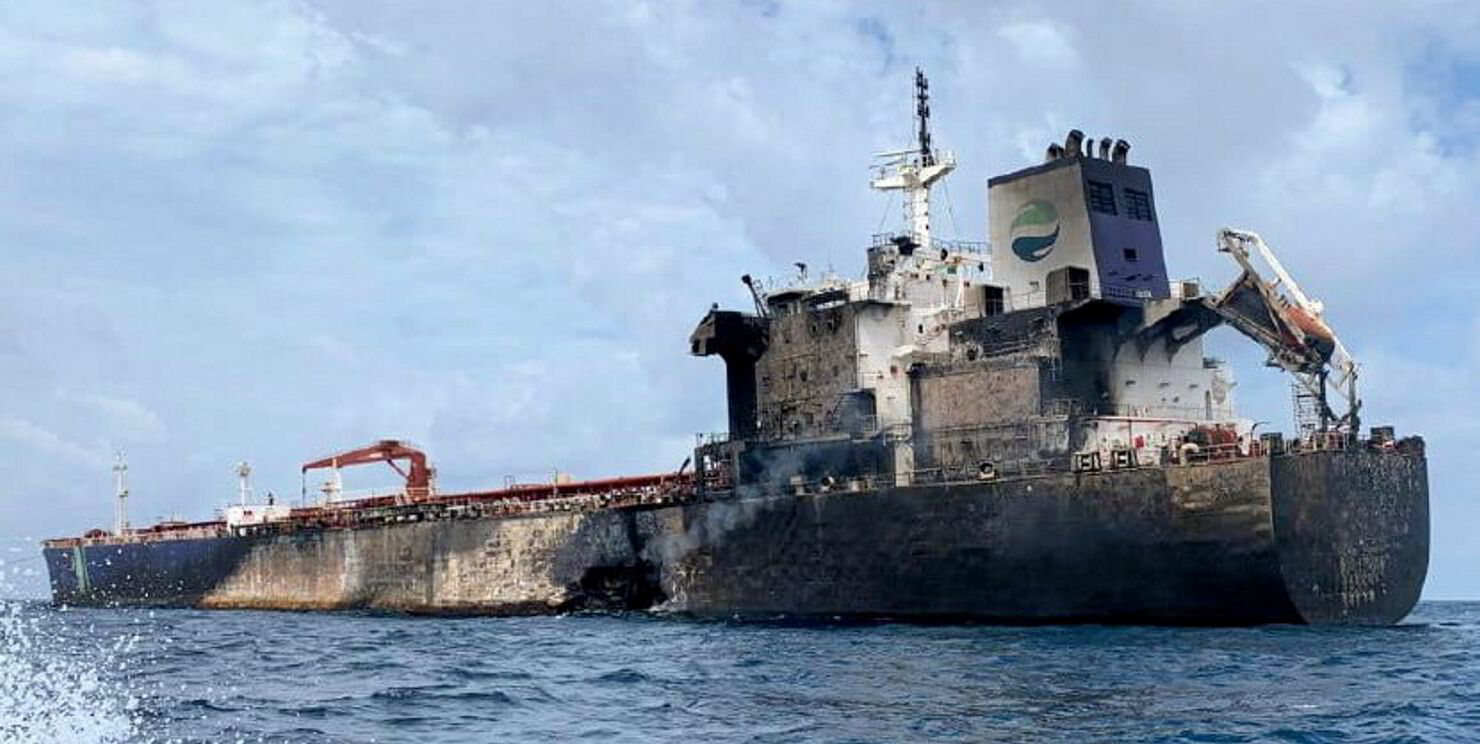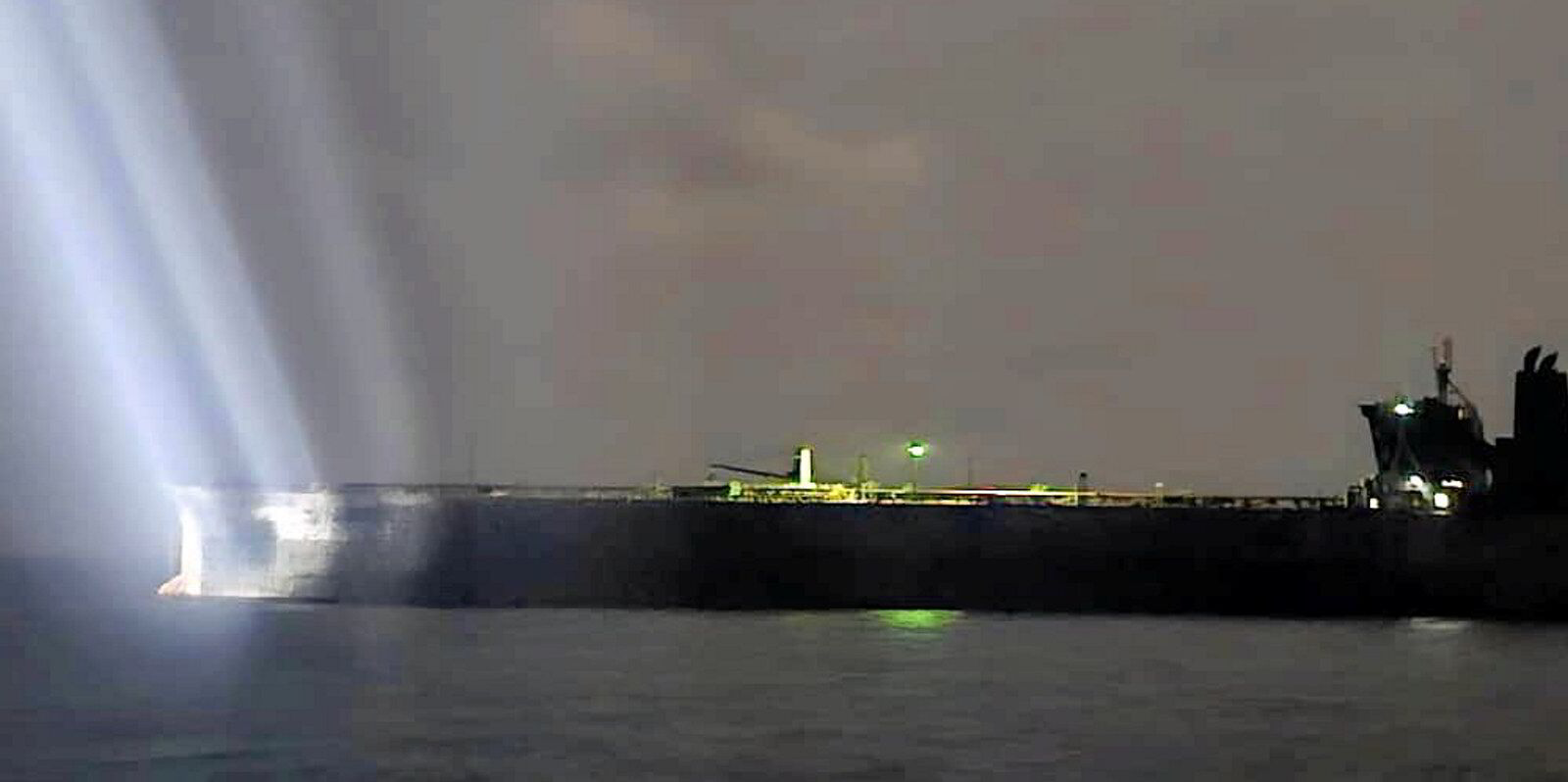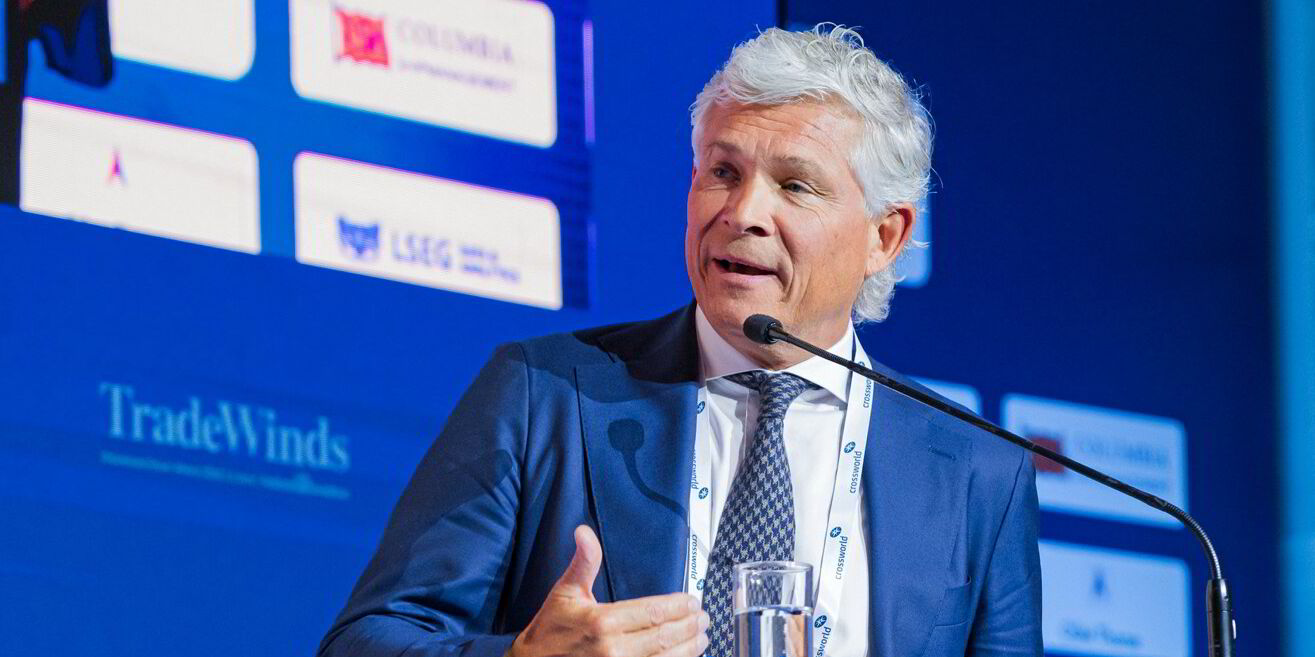Hafnia says it is working with Malaysian and Singaporean authorities to develop a safe towage plan for its product tanker that was involved in a collision with a Chinese-owned VLCC.
The tanker owner and authorities are also assessing a suitable location where the naphtha cargo on board the collision and fire-damaged 74,200-dwt Hafnia Nile (built 2017) can be transferred and repairs made.
The Hafnia Nile was severely damaged during the collision on 19 July with the Shanghai Prosperity Ship Management-operated 300,000-dwt Ceres I (built 2001). Both ships caught fire.
Hafnia, in an update sent to TradeWinds on Monday evening, said the Hafnia Nile, which remains close to the accident scene near the island of Pedra Branca close to the entrance of the Singapore Strait, was in stable condition and was being attended by four tugs equipped for oil response and firefighting.
An additional tug with deep-sea towing capacity is expected to join the ship soon.
“Heat assessments have not revealed any hot spots on the Hafnia Nile’s external structure, and there are no visible signs of flames or smoke. Further assessments by experts on site are ongoing,” the company said.
“Hafnia is cooperating with the Maritime and Port Authority of Singapore … as the flag administration in the investigation into Friday’s incident.”
Hafnia’s response to the collision differs considerably from the response of the Ceres I’s operator. Whereas the Hafnia Nile’s entire crew were evacuated, most of the VLCC’s 40 crew members remained on board to fight the fire.
The Malaysian Maritime Enforcement Agency reported over the weekend that the Ceres I had fled the accident scene after going dark by switching off its AIS transponder.
Malaysian authorities said they later located and apprehended the tanker and the two tugs that were towing it.
The Ceres I has been widely alleged to be part of the dark fleet — tankers used to carry sanctioned Iranian crude oil that move across the oceans with their AIS transponders turned off.
Many people in the industry have highlighted the serious danger that these obscurely regulated and insured vessels pose.





